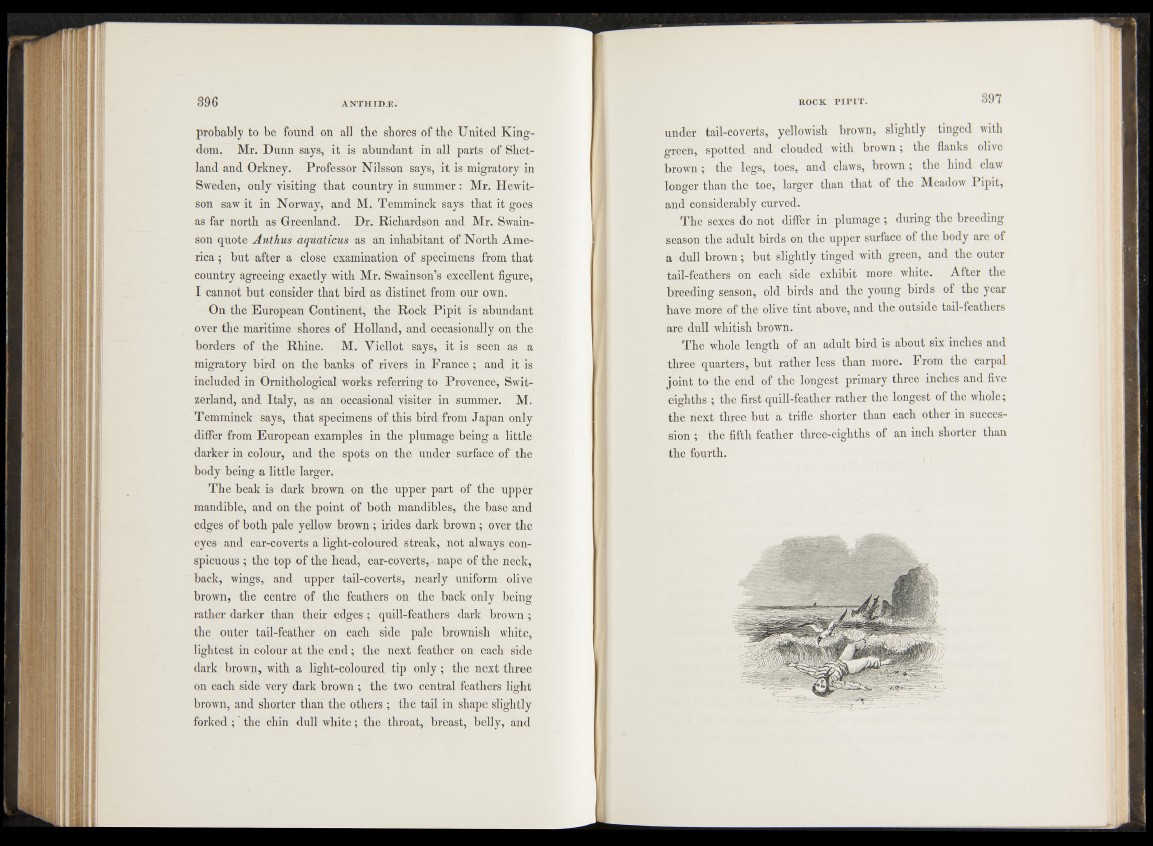
probably to be found on all the shores of the United Kingdom.
Mr. Dunn says, it is abundant in all parts of Shetland
and Orkney. Professor Nilsson says, it is migratory in
Sweden, only visiting that country in summer : Mr. Hewit-
son saw it in Norway, and M. Temminck says that it goes
as far north as Greenland. Dr. Richardson and Mr. Swain-
son quote Anthus aquaticus as an inhabitant of North America
; but after a close examination of specimens from that
country agreeing exactly with Mr. Swainson’s excellent figure,
I cannot but consider that bird as distinct from our own.
On the European Continent, the Rock Pipit is abundant
over the maritime shores of Holland, and occasionally on the
borders of the Rhine. M. Viellot says, it is seen as a
migratory bird on the banks of rivers in France ; and it is
included in Ornithological works referring to Provence, Switzerland,
and Italy, as an occasional visiter in summer. M.
Temminck says, that specimens of this bird from Japan only
differ from European examples in the plumage being a little
darker in colour, and the spots on the under surface of the
body being a little larger.
The beak is dark brown on the upper part of the upper
mandible, and on the point of both mandibles, the base and
edges of both pale yellow brown; irides dark brown ; over the
eyes and ear-coverts a light-coloured streak, not always conspicuous
; the top of the head, ear-coverts, nape of the neck,
back, wings, and upper tail-coverts, nearly uniform olive
brown, the centre of the feathers on the back only being
rather darker than their edges ; quill-feathers dark brown ;
the outer tail-feather on each side pale brownish white,
lightest in colour at the end; the next feather on each side
dark brown, with a light-coloured tip only ; the next three
on each side very dark brown ; the two central feathers light
brown, and shorter than the others ; the tail in shape slightly
forked ; the chin dull white; the throat, breast, belly, and
under tail-coverts, yellowish brown, slightly tinged with
green, spotted and clouded with brown; the flanks olive
brown; the legs, toes, and claws, brown; the hind claw
longer than the toe, larger than that of the Meadow Pipit,
and considerably curved.
The sexes do not differ in plumage ; during the breeding
season the adult birds on the upper surface of the body are of
a dull brown; but slightly tinged with green, and the outer
tail-feathers on each side exhibit more white. After the
breeding season, old birds and the young birds of the year
have more of the olive tint above, and the outside tail-feathers
are dull whitish brown.
The whole length of an adult bird is about six inches and
three quarters, but rather less than more. From the carpal
joint to the end of the longest primary three inches and five
eighths ; the first quill-feather rather the longest of the whole;
the next three but a trifle shorter than each other in succession
; the fifth feather three-eighths of an inch shorter than
the fourth.